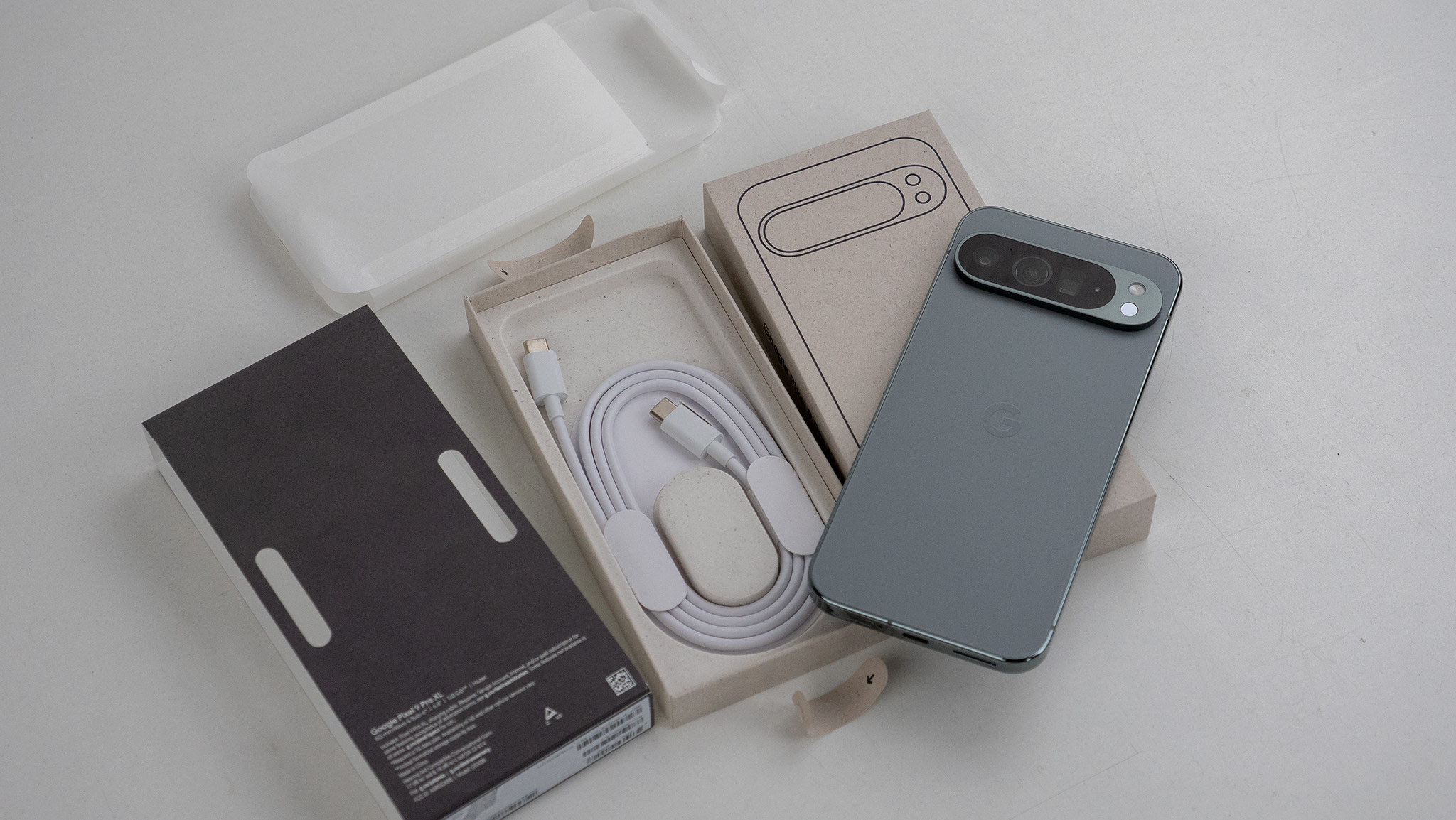Nexus 5X versus iPhone SE: Battle of the upper middle class
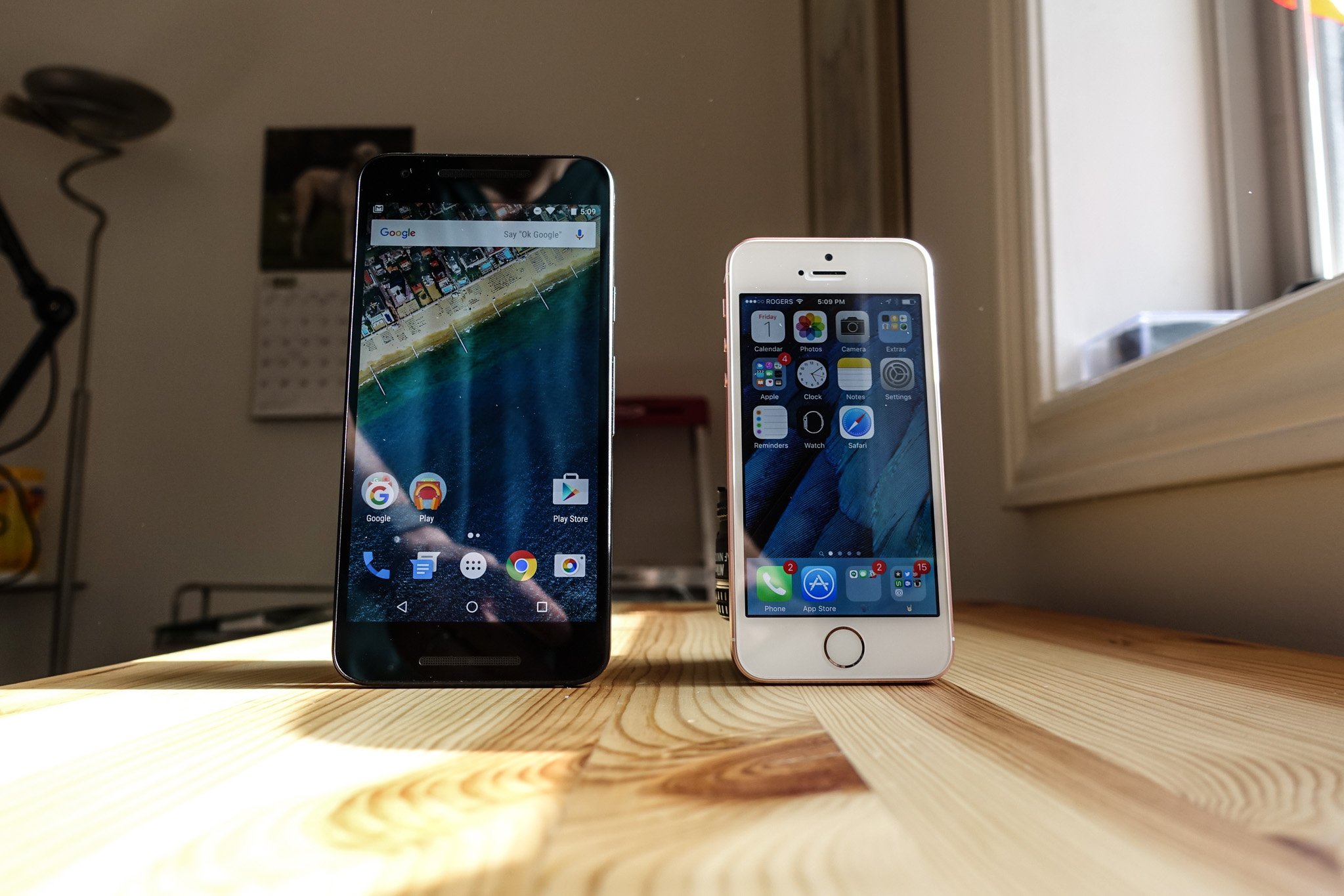
The mid-range often is the hardest aspect of the smartphone market to talk about. It's neither the filet nor the stew; it fits comfortably in the middle, attempting to convince its potential buyers that good enough is good enough.
Increasingly, though, the commodification of the components inside popular smartphones have enabled price drops relative to performance that benefit millions of potential customers who don't want the latest and greatest. That is, it's cheaper and easier than ever to cram pretty good spec into a "mid-range" phone, at a price that's easier to swallow.
In the Nexus 5X and iPhone SE, two very different phones from manufacturers that, for these phones approached industrial design from opposite ends of the spectrum, LG and Apple emerge with phones around the same price.
While the Nexus 5X, at $349, is $50 cheaper than the $399 iPhone SE, these are representative of the best and likely purest forms of their respective platforms' middle. While many Android users are unlikely to consider the iPhone SE, it's a good idea to look at what the other team is doing to shine a light on the home team's performance.
Hardware
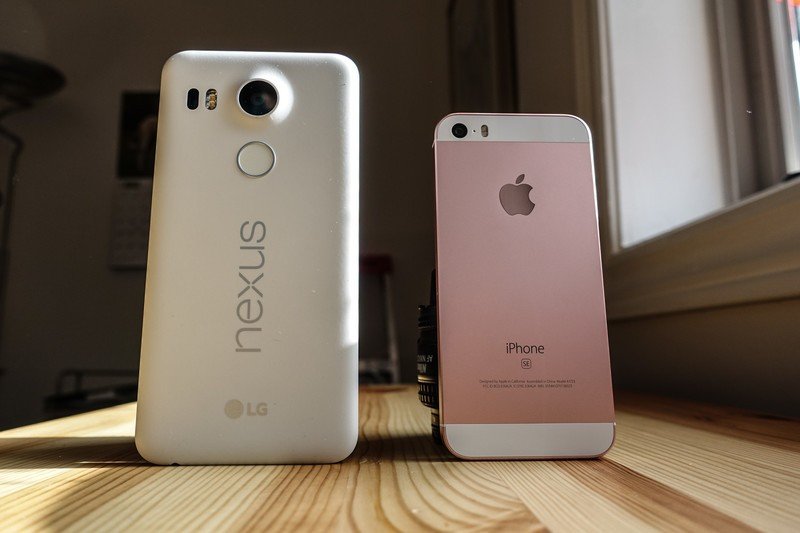
The Nexus 5X is ostensibly the successor to the popular Nexus 5, which was released shortly after the iPhone 5s in 2013. While 2014's Motorola Nexus 6 was a hulking beast of a phone, the cry for something smaller was heard by Google. And this is what we got in late 2015.
Few would argue that the plastic Nexus 5X feels as premium a phone next to the metal-and-glass finish of the iPhone SE, but it does the job. Like its predecessor, the 5X incorporates a comfortable rubberized plastic on the back and sides, though the seams are quite visible along the outer bezel, where the front and back portions meet.
These two phones are representative of the best and likely purest forms of their respective platforms' middle.
In the hand, the 5.2-inch Nexus 5X feels relatively compact, though taller than some others with the same screen size. The power button is located on the right side, just above the non-delineated volume rocker, a divisive choice among eyes-free purists (like myself).
Be an expert in 5 minutes
Get the latest news from Android Central, your trusted companion in the world of Android
On the back, just below the 12MP camera sensor with its gently sloping lens, is the fingerprint sensor, primed for users removing the phone from their pockets and unlocking in one fell swoop. The main disadvantage of the back-facing Nexus Imprint sensor, as it is called, is that it can't be activated until the phone is held in the hand — a small consequence for a sensor that excels in every other way. It even activates when the screen is turned off.
Around front, the 1080p display is fine. It's not great, and we've certainly seen better LCD panels from companies like HTC and even LG itself (which makes its own displays), but it does the job. Colors are slightly off, though only noticeable when compared to a higher-fidelity panel, and maximum brightness doesn't come close to that of the Nexus 6P, which is admittedly 50 percent more expensive.
The Nexus 5X is plasticky but never flimsy; LG could have done a better job hiding the seams in the two pieces where they meet on the bezel, but otherwise I have little to complain about.
The iPhone SE, on the other hand, is comparatively compact. While its screen is a tiny 4 inches, its overall form factor is dwarfed by just about every other smartphone on the market, including the Nexus 5X. Indeed, the iPhone SE's design is unchanged from the iPhone 5s, which was a derivative of the iPhone 5 design unveiled in 2012.
For fans of the dual-toned metal look, the iPhone SE, available in four colors, will be a welcome addition to the smartphone canon. At $399, however, it is mainly about what you find in the inside that helps it stand out from the crowd.
The iPhone SE's design is a known quantity at this point: aluminum body with a power button on the top right and delineated volume buttons on the left side. A 12MP rear camera sensor lacks the bump of its iPhone 6 counterparts, owing to a slightly thicker body. Around front, the first-generation Touch ID sensor still sits, as it always had, below the Retina Display, which at this point is inexcusably low quality for a smartphone released in 2016. While the LCD panel's qualities are sound — excellent color reproduction (better than the Nexus 5X's, actually), viewing angles and maximum brightness — the 1136 x 640 pixel resolution doesn't do iOS any favors. At 326 pixels per inch, the iPhone SE's pixel density is still higher than, say, the $180 third-gen Moto G, but is bested by practically every 1080p device on the market.
The iPhone SE's design is a known quantity at this point
For some buyers, the dearth of pixels means fewer for the iPhone SE's A9 system-on-a-chip to push and better performance; for others, it's an inexcusably low resolution. Where you fit will depend on how steadfastly you subscribe to the "specs as a feature" narrative. Apple thinks 326 pixels per inch is sufficient for most people; most Android OEMs have used that stubbornness to their advantage.
Specs
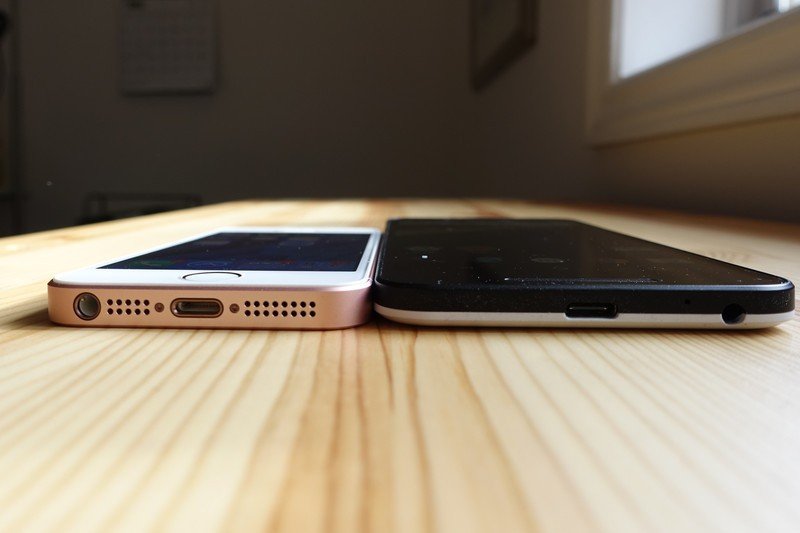
| Category | LG Nexus 5X | Apple iPhone SE |
|---|---|---|
| Operating System | Android 6.0.1 Marshmallow | iOS 9.3 |
| Display | 5.2 inchesFHD (1920x1080) LCD at 423 ppi | 4 inches1136x640 LCD at 326 ppi |
| Processors | Qualcomm Snapdragon 808 Processor, 1.8GHz hexa-core 64-bitAdreno 418 GPU | Apple A9 SoC, 1.85GHz dual-core 64-bit |
| Rear Camera | 12.3MP1.55 μm pixels, f/2.0 aperture4K video capture @ 30fps120 fps slow motion video captureBroad-spectrum CRI-90 dual flash | 12MP1.22μm pixels, f/2.2 aperture4K video capture @ 30fps240fps slow motion video captureLive Photos support |
| Front Camera | 5MPf/2.2 aperture | 1.2MPf/2.4 aperture |
| Memory & Storage | RAM: 2GB LPDDR3Internal storage: 16GB or 32GB | RAM: 2GBInternal storage: 16GB or 64GB |
| Dimensions | 147.0 x 72.6 x 7.9 mm | 123.8 x 58.6 x 7.6 mm |
| Weight | 136g | 113g |
| Battery | 2,700 mAh | 1,624 mAh |
As for specs, the iPhone SE and Nexus 5X differ in their approaches. The former takes a few parts of the larger and more expensive iPhone 6s — the processor, the RAM, the rear camera — and maintains almost everything else from the iPhone 5s. The Nexus 5X is both an aesthetic successor to the Nexus 5 and a conscious step down from the imposing metal-and-glass Nexus 6P. Not only is the 5X a less intimidating device, but it feels less precious than anything made of metal; toss it around, scratch it, and use it until it dies. It feels like the quintessential phone-as-utility.
That compromise extends to the spec sheet as well. With a 5.2-inch 1080p display, a Snapdragon 808 chip, 2GB of RAM, a base storage size of 16GB, and a 2,700mAh battery, it's clear where LG cut some corners to bring the price down to $349. Only the 12.3MP rear camera is shared with its Huawei-made sibling, but even there the 6P, with its more capable Snapdragon 810, manages more video options and a better front-facing camera.
It will be important for Google to address broader Nexus 5X performance issues in upcoming Android updates
For the most part, the Nexus 5X's spec sheet is respectable; it shares many similarities to LG's 2015 flagship, the G4. But many users, including our Android Central editorial team, decried the 5X's poor performance. Andrew Martonik, AC's West Coat editor, noted that "whether it was opening apps, scrolling heavy webpages or switching between different areas of the phone, everything seems to take a little longer than it should." While it's possible Google could fix these issues with a software update, they've had seven months to do so and haven't solved the 5X's performance issues. In my tests, the 5X felt speedy enough, capable of doing most things without significant slowdown, but it will be important for Google to address broader performance issues in upcoming Android updates, especially since the 5X comes with only 2GB of RAM, which in the past has been a bottleneck for many mid-range Android devices.
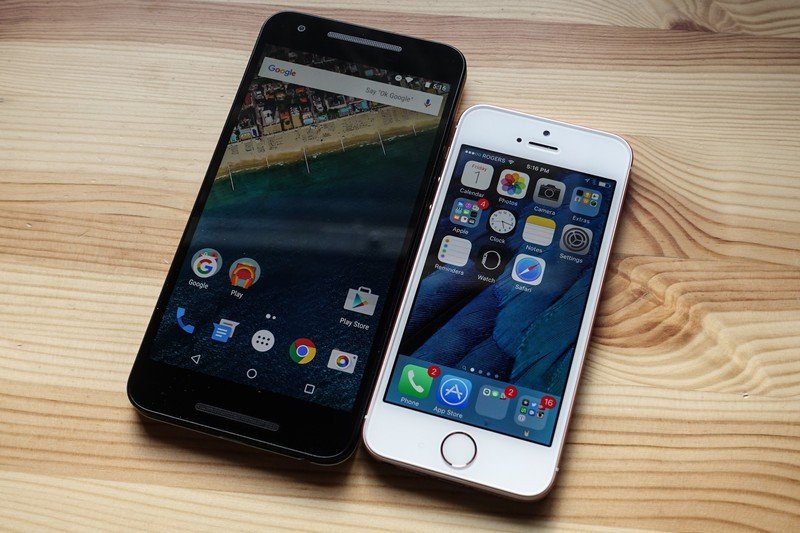
Turning to the iPhone SE, it benefits from having Apple's latest A9 system-on-a-chip, which has been praised for its excellent single-core CPU performance and incredible graphics prowess. Indeed, the A9 is likely overkill for the iPhone SE's needs at this point, but Apple likely wants to keep the phone in its lineup for up to three years, so aging well will be important. Similarly, the inclusion of 2GB of RAM is important to maintain the iPhone SE's longevity. (Two gigabytes of RAM on Android is a very different story than on the less background task-intensive iOS. This isn't a subjective thing, either, so don't email me about it.)
In some ways, the iPhone SE doesn't go far enough to address the need for an inexpensive iPhone in the market. Sure, it has the latest processor and camera, but it also maintains the same first-generation Touch ID sensor and vibration module of the 5s. It has the same 800:1 contrast screen, wherein its successors have almost doubled that stat. Its mono speaker is soft and muddy (though so is the 5X's) and it retains the now-poor front-facing camera of the iPhone 5s.
Ultimately, there are sacrifices and compromises in both the iPhone SE and Nexus 5X. They may not be going head to head in terms of demographics, but they're important representatives of what nearly the same amount of money gets in the iPhone and Android ecosystem today, removed from carrier subsidies and bloatware.
Speaking of bloatware ...
Software
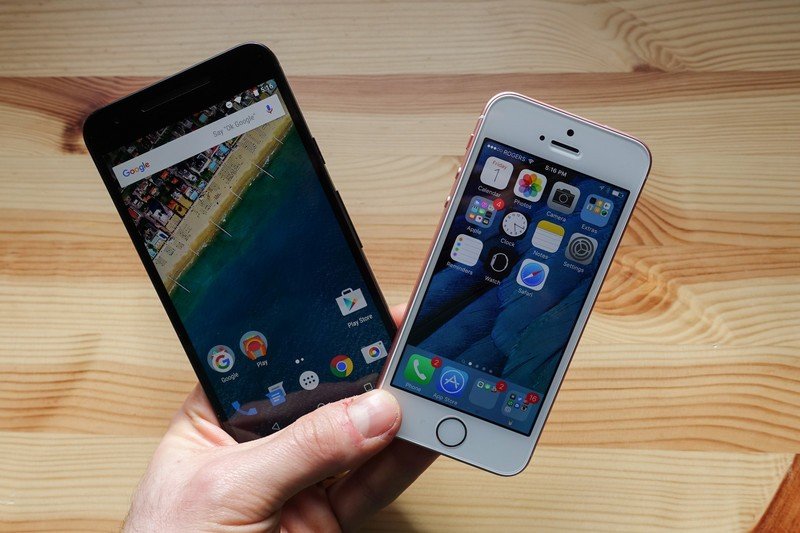
Both the Nexus 5X and iPhone SE run "pure" versions of their respective platforms. That the case has always been true of every iPhone isn't really relevant; what you need to know here is that both devices are updated as quickly as possible directly from the companies responsible for their oversight.
On the Nexus 5X, this means always having the latest version of Android, unadorned with carrier changes or skins. It also means not having to wait for carriers to go through their often-arduous quality assurance (QA) testing, which often adds weeks or months to the upgrade cycle.
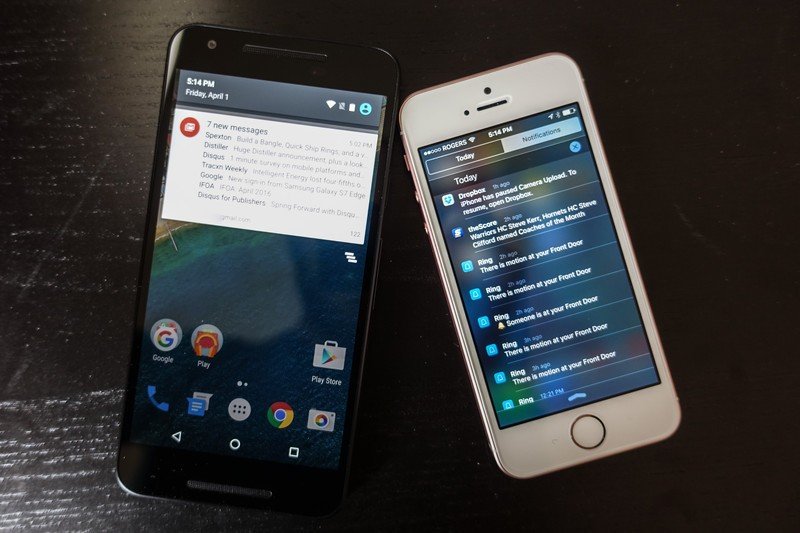
As for the software itself, it's no longer possible to generalize (nor was it ever productive) the basic underpinnings of either Android or iOS. For too long, people said that Android was for tweakers and "power users" and iOS for those wanting something simpler and more minimal. While I'll leave the pontificating for another time, suffice it to say you won't be wanting for power, simplicity or minimalism with either platform; both are incredibly versatile, with powerful first-party apps and deep, diverse app stores.
What's potentially interesting is where the two operating systems will soon diverge. We know that as of Android N, the Nexus 5X will gain split screen multitasking through an official API which, despite the smallish screen, will make for a considerably more interesting (and, as we've learned from Samsung and LG, potentially messy) user experience. It's extremely unlikely that Apple will follow suit on the phone side of things; it added dual-app multitasking on the iPad with iOS 9.
Cameras
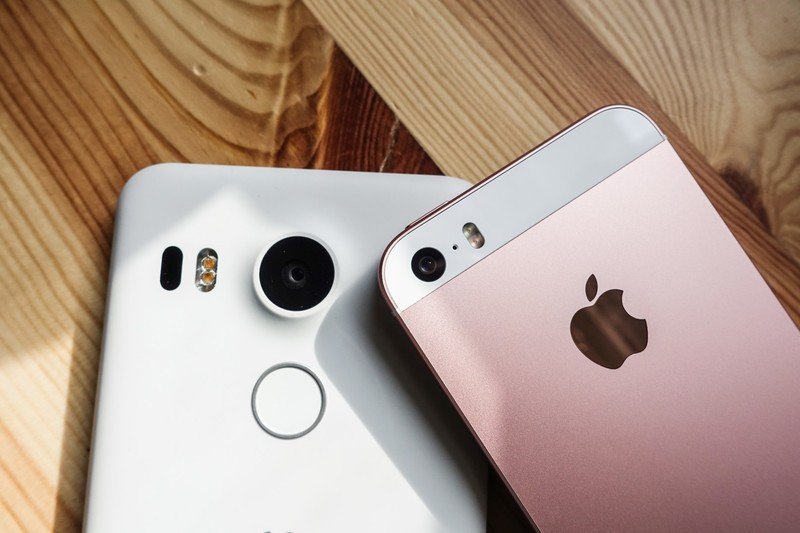
Both the Nexus 5X and iPhone SE sport 12-megapixel camera sensors, with sharp lenses and super-simple first-party camera apps.
When it was released, the Nexus 5X received accolades for its camera prowess, capturing sharp, color-accurate photos with little struggle from the user. I tend to agree with this assessment, finding most of the phone's photos not just usable, but beautiful. Its 1/2.3-inch sensor and 1.55um pixels ensure superior low-light performance to nearly every smartphone on the market, even without the presence of optical image stabilization.
The iPhone SE, on the other hand, inherits the iPhone 6s's 12MP camera, which turns out to be a very capable little camera. At 1/3" and 1.22um pixels, the iPhone SE doesn't hold up to the Nexus 5X in low-light scenarios, but the A9's image signal processor tends to resolve colors more accurately than the 5X.
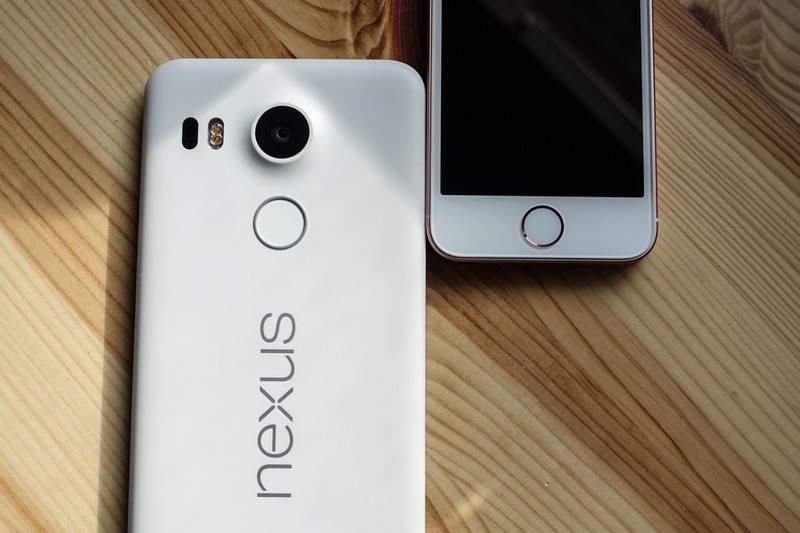
In reality, these two phones show extremely similar profiles, with the Nexus 5X exposing daylight scenes slightly darker than the iPhone. Photo after photo revealed subtle details, with little distortion and vibrant hues. And the 5X's 5MP front-facing camera destroys the iPhone's 1.2MP sensor in almost every condition.
Nexus 5X (left) / iPhone SE (right); click images to view larger
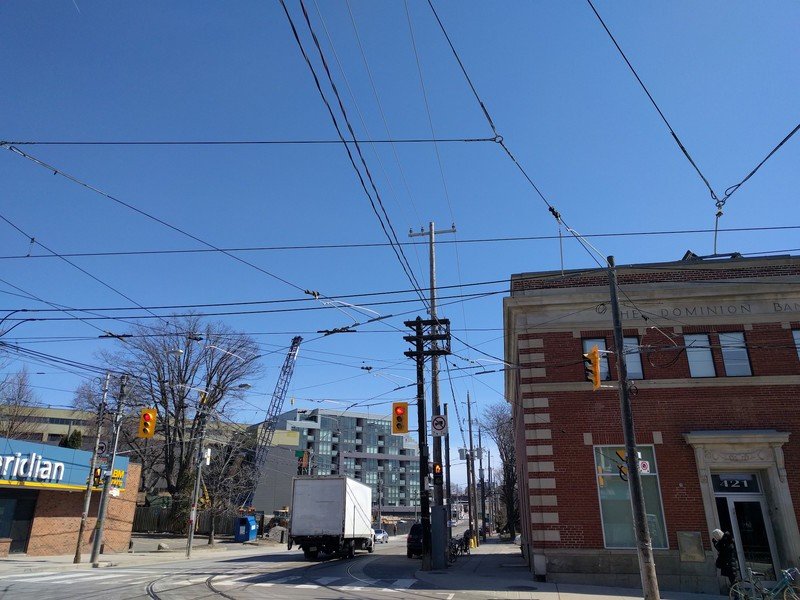
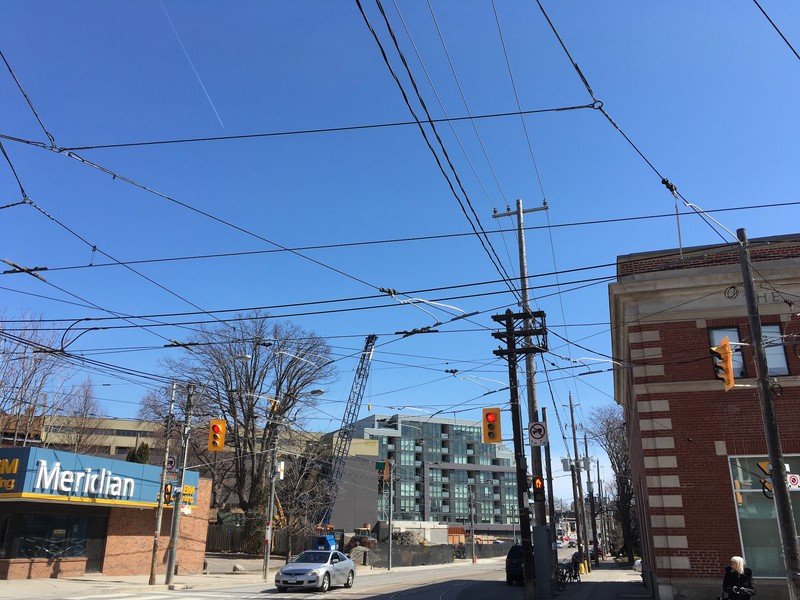
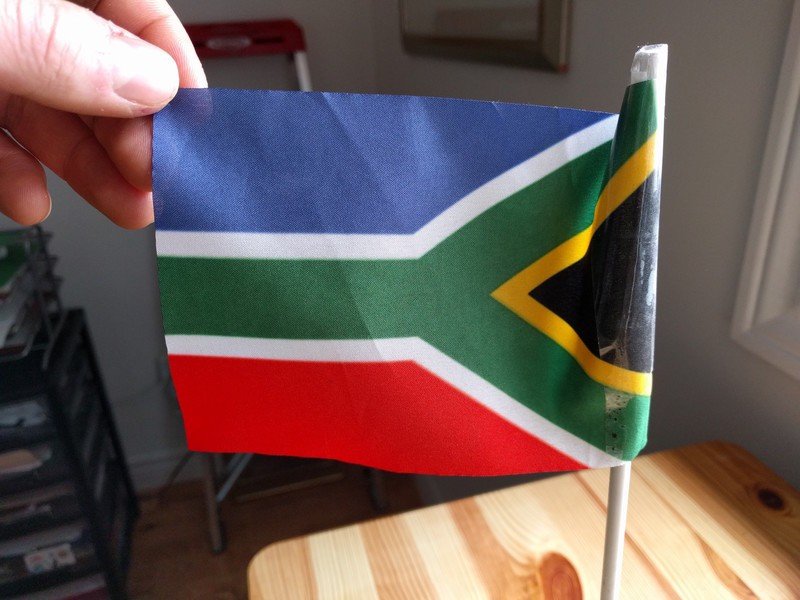

The iPhone SE does have a few feature advantages over the Nexus 5X. Apple saw fit to include Live Photos support — moving-picture previews — which some see as a gimmick, but I really enjoy. The iPhone SE also supports 240fps slow motion video at 720p, which is considerably more balanced and less jumpy than the Nexus 5X's 120fps equivalent. To that end, the iPhone is overall a far superior video machine, both from a capture and editing perspective. While the 5X takes 4K video at 30fps, it doesn't do so with panache.
The bottom line
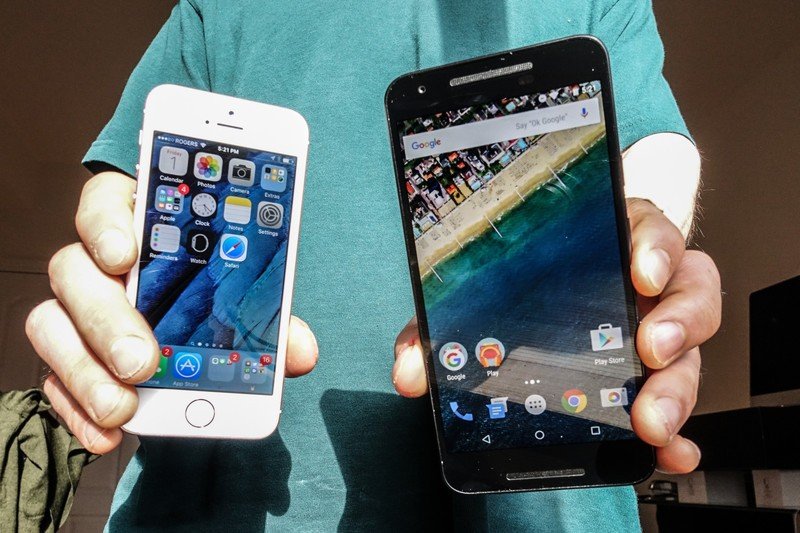
As I said at the beginning, this comparison isn't likely to sway an Android user to iPhone or vice versa; instead, it is meant to show what you get for around $350 to $400 these days from the companies that have a hand in both hardware and software.
The Nexus 5X, at $349, is an underrated choice for many people, despite its lingering performance issues. It's fast, with a great camera and excellent battery life. What it lacks in beauty it makes up for in utility; this is a plastic phone that can take a beating.
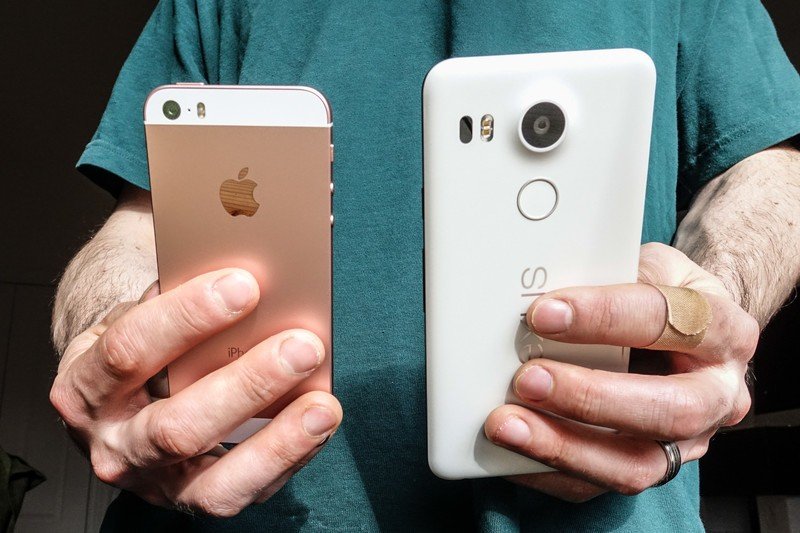
The iPhone SE, at $399, is a far more confounding product in many ways. It bears resemblance to its larger, more substantial counterparts in some ways, but doesn't go far enough in many others. Even if someone is after a small phone, they're left asking why Apple decided to keep so many outdated aspects of the three year-old iPhone 5s.
On both the Android and iOS side, we're in a good place right now. There is plenty of choice, and nearly every option offers an exceptional experience. Just beware of what you're giving up by keeping the price down.
Daniel Bader was a former Android Central Editor-in-Chief and Executive Editor for iMore and Windows Central.

